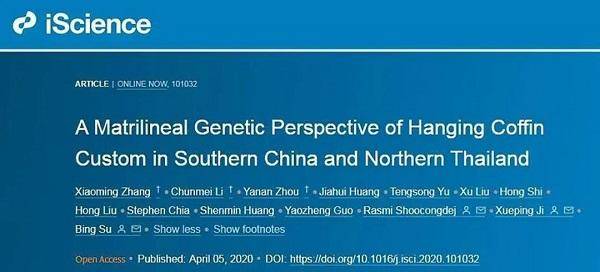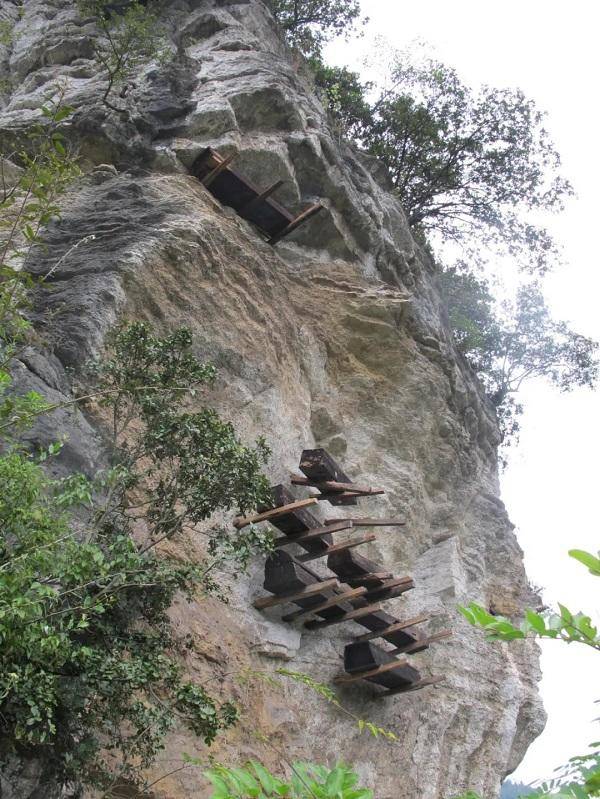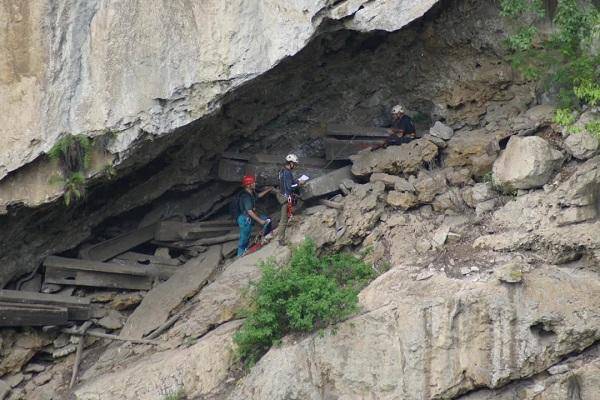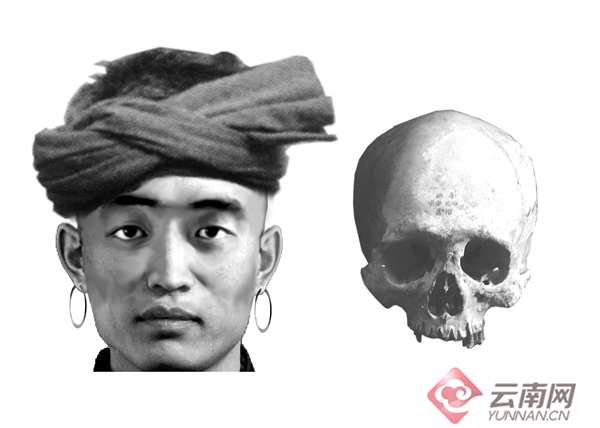DNA study: hanging-coffin buriers in NE Yunnan are Baiyue people
The internationally famed journal iScience recently published a DNA study entitled “A Matrilineal Genetic Perspective of Hanging Coffin Custom in Southern China and Northern Thailand,” indicating that inheritors of the hanging-coffin burials in northeast Yunnan’s Zhaotong City belong to descendants of the ancient Baiyue ethnic group.

The hanging-coffin burial is a folk custom that originated in southeast China’s Fujian around 3,600 years ago. Later, it was spread to Yunnan and other provinces in southwest China, with the latest burial sites available at Doushaguan of Yanjin County in Zhaotong City. There, the sites are specially called "hanging coffins of the Bo people".
Though it remained missing mysteriously in China since late Ming Dynasty (1368-1644), the hanging-coffin burial was popular till the Qing Dynasty (1636-1912) in the Southeast Asian countries of Thailand, Vietnam, Malaysia and others.

To trace the origin/spread of the burial custom and the ethnic affinities of its inheritors, Zhang Xiaoming, first author of the paper and associate researcher with the Kunming Institute of Zoology under the Chinese Academy of Sciences, conducted mitochondrial whole-genome analyses of 41 human remains sampled from 13 hanging-coffin sites.
The DNA analyses were aided by doctorate Li Chunmei, graduate Zhou Yanan, Yunnan researcher Ji Xueping, and Thai Professor Rasmi Shoocongdej. And the samples that date back to 660-2500 years ago come from the coffin sites in the counties of Weixin and Yanjin in Zhaotong, as well as the sites in Guangxi’s Baise City and the Thai locality of Pang Mapha.

The study found that there were genetic connections between the hanging-coffin people living in different geographic regions. Notably, the matrilineal genetic diversity of the hanging-coffin people from southern China is much higher than those from northern Thailand, consistent with the hypothesized single origin of the hanging-coffin custom in southern China about 3,600 years ago, followed by its dispersal in southern China through demic diffusion, whereas the major dispersal pattern in Southeast Asia is cultural assimilation in the past 2,000 years.

Reporting by Cai Houyou and Shen Xun (Yunnan Net); trans-editing by Wang Shixue